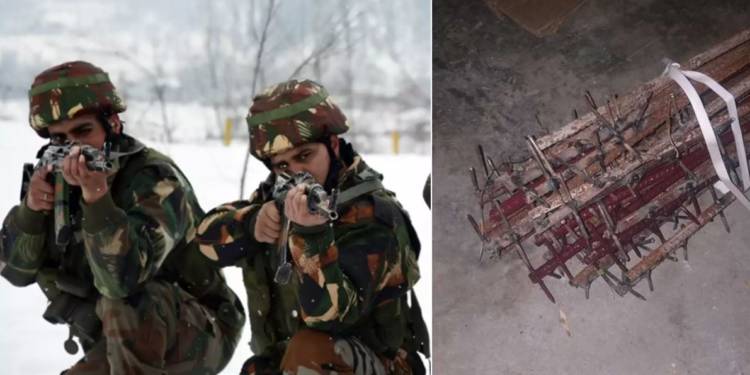As per various reports, India is expected to review the 1996 border engagement treaty with China after the Galwan valley clash, in which both sides suffered casualties. Many news reports pointed out about the brutalities of the Chinese army, armed with iron rods, stones, sticks with barbed wires, and nails, to inflict maximum damage to the Indian side.
“The sheer violence and barbarity being displayed by the Chinese troops is shocking and goes against every agreement signed between India and China. In wake of this, the SOPs and rules of engagement are being looked into,” reads a report by The Print.
Given the brutalities of Chinese armed forces, India is considering a review of the practice of not carrying firearms in a 2Km range of Line of Actual Control. “Neither side shall open fire, cause bio-degradation, use hazardous chemicals, conduct blast operations, or hunt with guns or explosives within two kilometers from the line of actual control. This prohibition shall not apply to routine firing activities in small arms firing ranges,” reads the agreement signed in 1996, which prohibits any side from carrying firearms.
TFIPOST has opined that ‘no gun’ treaty with China should be thrown into the dustbin because it puts India at a disadvantage. The last skirmishes between both sides happened in 1967, in which 88 Indian Army soldiers and more than 300 Chinese soldiers were killed. This shows that the Chinese side suffered disproportionate casualties when there was no “no gun or explosive” agreement.
The brutalities by the Chinese army show that any peace agreement with China is of no use. “The pushing and jostling have happened in the past as well. The pelting of stones by the Chinese has been seen in recent years. But use of clubs with barbed wires and nails is shocking and will not be tolerated,” said an official.
In the last three decades, India signed three border agreements– 1993, 1996, 2013- in order to maintain peace between the PLA and the Indian Army at the Line of Actual Control. Right from the Panchsheel agreement (1954), to these three border agreements with India, China has not abided by a single of them. Despite the Panchsheel agreement, China fought the 1962 war and took the Aksai Chin area which it occupies till today.
Despite the savagery of Chinese soldiers who were armed with medieval weapons, soldiers of the Indian Army fought on without resorting to firearms, sticking to protocol even in the face of death.
Let us get the facts straight.
All troops on border duty always carry arms, especially when leaving post. Those at Galwan on 15 June did so. Long-standing practice (as per 1996 & 2005 agreements) not to use firearms during faceoffs. https://t.co/VrAq0LmADp
— Dr. S. Jaishankar (Modi Ka Parivar) (@DrSJaishankar) June 18, 2020
Chinese Army picked a fight with the Indian Army in spite of the 1993 border agreement, which reads that in case the personnel from either side cross the Line of Actual Control, “upon being cautioned by the other side, they shall immediately pull back to their side of the Line of Actual Control.”
China is an irresponsible global power with an ambitious expansionist policy. Therefore, India does not need to abide by any border agreement and instead let Indian Army soldiers use firearms which will give them strategic advantage in tough Himalayan terrains, and deter Chinese PLA from crossing India’s borders.































